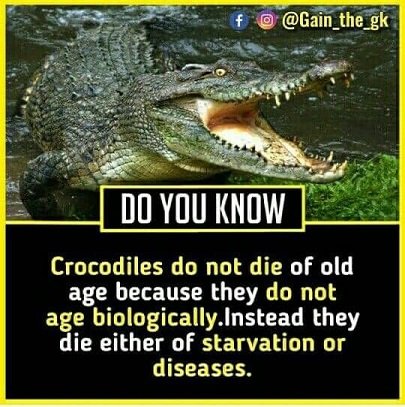Crocodiles are one of the few species that exhibit a phenomenon called “negligible senescence,” meaning they don’t experience physical deterioration or aging like most other living beings. Here are some interesting points about crocodiles’ remarkable longevity:
– *No telomere shortening*: Telomeres are protective caps on chromosomes that shorten with each cell division. In most animals, telomere shortening leads to cellular aging. However, crocodiles’ telomeres remain long and stable, contributing to their slow aging.
– *High cellular maintenance*: Crocodiles have efficient mechanisms to repair and maintain their cells, which helps prevent age-related damage.
– *Low metabolic rate*: Crocodiles have a slow metabolism, which reduces oxidative stress and cellular damage.
– *Adaptation to environment*: Crocodiles have evolved to thrive in challenging environments, making them resilient to stress and disease.
– *Long lifespan*: While they don’t die of old age, crocodiles can live up to 70 years or more in the wild, and over 80 years in captivity.
– *Death by starvation or disease*: crocodiles typically die from external factors like starvation, disease, or injury, rather than aging.
– *Evolutionary advantage*: Their slow aging and longevity may be an adaptation to ensure they can reproduce and pass on their genes, even in harsh environments.
It’s important to note that while crocodiles don’t age biologically, they still experience physical changes over time, like growth and wear on their bodies.
Scientists continue to study these remarkable creatures to better understand their aging mechanisms and potential applications for human health. Just like Lions and other alpha animals, these beasts all live on a carnivore diet.







